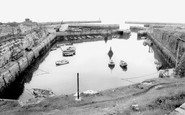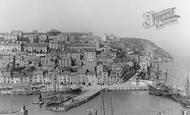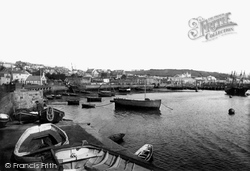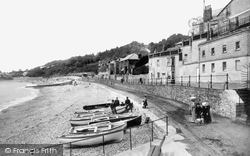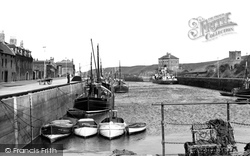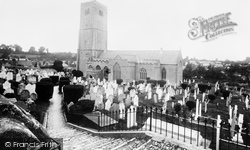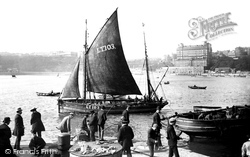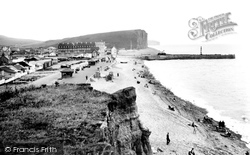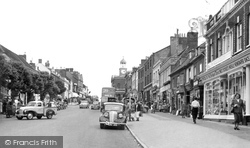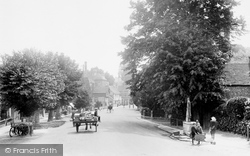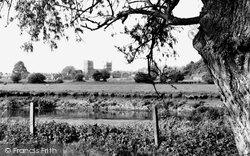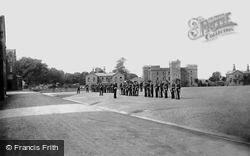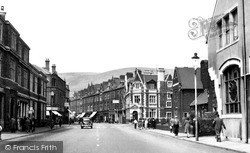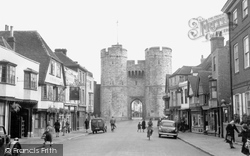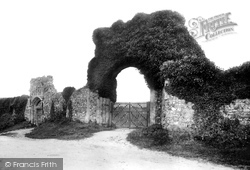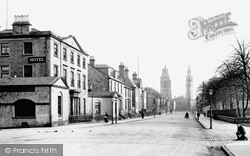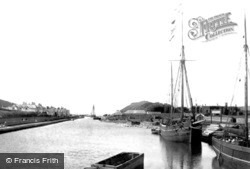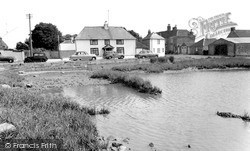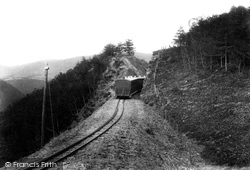Places
1 places found.
Did you mean: arthur ?
Those places high-lighted have photos. All locations may have maps, books and memories.
Photos
4 photos found. Showing results 121 to 4.
Maps
71 maps found.
Books
1 books found. Showing results 145 to 1.
Memories
96 memories found. Showing results 61 to 70.
Seaham Harbour
THE MEN WOULD BRING THE BOATS IN AND HANG BUNCHES OF CRABS AND FISH ON THE RAIL SO WE COULD CHOOSE OUR OWN.
A memory of Seaham by
East Front Road In The Sixties
My Grandparents, George and Ella Ashford, had retired to Pagham in 1958. They lived at number 12 East Front Road. Their bungalow was very comfortable with a great view out over the channel. The original railway carriage ...Read more
A memory of Pagham by
Seafront Bungalow
I remember staying here with my parents sister and cousin must have been about 1950. I would have been about 6 or 7. Seem to remember a sort of sunroom located at the front where us kids slept in makeshift beds made up from loungers ...Read more
A memory of Southwold
Magical Dysart
we lived at 15 relief st dysart in the early 50s moved there from kirkcaldy we had to move out when they started to demolish the place so sad it was great place to grow up in I was about six or seven yrs old when we moved there, went ...Read more
A memory of Dysart
My Childhood In Wolverhampton 1946 1955
I played in the standing corn stooks behind our house, had my first pony/horse ride at Dixon's farm where my horse went berserk in a potato field, so I was put onto and stayed on a horse lead. I flew my ...Read more
A memory of Wolverhampton by
House Disappeared
We have purchased Harbour Sails, Overgang. In the picture you can see that once upon a time there was rather large house sitting in front,which is no longer there, (where the boats are in corner of quay, there’s 2 masts that point to the old house). What happened to it?
A memory of Brixham by
Evacuated To Hele....
I am guessing the year would have been 1944.... I would have been 6 and my brother would have been 5. I dont know how we were evacuated exactly...because we didnt go through the School system, we went with our Mother and our Grandmother ...Read more
A memory of Hele by
Growing Up In Ramsgate
I was born in Ramsgate in 1947. An only child, I lived with my parents in Grove Road. I have many happy memories of the town. Each night, as a young child, I used to go out with my father for "a little walk around" and we covered a ...Read more
A memory of Ramsgate by
Harrowfield Boys School
In 1958 the school had a trip to Rome for the Olympics. We also had a week on the Foudroyant, a ship harboured in Portsmouth Harbour. Remember we rowed to the IoW in a Whaler, (I think).
A memory of Harold Hill by
A Short Memory
I have many memorys of lingfield from walking home through jenners field in deep snow from school to falling in the pond !!!! Shame the school has gone now though .. would cut through the graveyard down the steps across the road up ...Read more
A memory of Lingfield by
Captions
211 captions found. Showing results 145 to 168.
Today the ships are rather less numerous - the Isles of Scilly boat 'Scillonian' is the only vessel of any size to operate from the harbour.
Beyond the boats and boatmen the old Cart Road to the Cobb harbour passes above Lucy's Ledge Jetty (centre left) and then below Cobb Cliff and Wings (top left).
Eyemouth's fine natural harbour has been the base for fishermen since medieval times. It was once the haunt of smugglers, who imported illicit spirits from the Continent.
Bangor's main street runs between the station and the harbour. The street today has been partly pedestrianised. In the early years of the 19th century, there were only 93 houses in the town.
Lyte's new church of All Saints', standing so prominently above the harbour.
Lyte's new church of All Saints', standing so prominently above the harbour.
A Lowestoft-registered fishing boat slips out to sea unnoticed by the anglers on the harbour. In the background is the imposing, if somewhat overpowering, edifice of the Grand Hotel.
of these stone and wooden jetties against the power of the sea, but also gives a good impression of the difficulties faced by the masters of sailing vessels in negotiating the narrow entrance to the harbour
This view shows the esplanade (left of centre) and the twin piers protecting the channel into Bridport Harbour (right). Looking eastwards from the cliffs above Black Rock.
As its name implies, this lovely Georgian town was once a port, though its harbour is now two miles away at West Bay.
Until about the middle of the 14th century, the town was also a port of some note, but by then the sea had begun to recede, leaving the harbour inaccessible to shipping and the river little more
Supplies came by sea to Poole Harbour and then by road from Hamworthy to Wimborne.
A 25-pounder gun and a Saladin armoured car are preserved on the site.
Its large Norman castle was built on a promontory that once stretched some distance out to sea, providing protection to the harbour that lay inland on the river estuary.
This view shows Southwold harbour on the other side of the river, with sailing craft, repair shops and landing stages.
Situated on the mouth of the Avon, it is a popular seaside resort, and boasts a harbour with the deepest berthing facilities in the British Isles.
Until 1829 it was the city jail, but in 1906 it became a museum of arms and armour.
The 1891 Pier Pavilion (centre) stands at the entrance to the pier, and at the end of the pier twin lighthouses flank the harbour mouth.
Following the ferocious storms of 1286-88, the River Blyth was diverted, the harbour partly blocked and huge areas of land were devoured by the sea, all of which marked the beginning of the decline of
The East India Harbour was completed in 1806-07, the Victoria Dock opened during the 1850s and the Albert Dock followed a decade or so later.
The harbour, with the sea lock in the far distance, still exists today, albeit completely altered. The quay to the right belonging to Hockin & Co is now a car park.
Sidlesham is a hamlet near Pagham Harbour. The 13th-century church of St Mary is built of stone rubble, not the usual flint of the area. Mapson's Farm was built in 1796.
This 12-mile-long railway was constructed along the south side of the Rheidol in 1901 to transport lead ore from the mines to the harbour, but it became a very popular tourist attraction for those wishing
In 1896 Newlyn fishermen, who never put to sea on Saturdays or Sundays, rioted in protest at 200 Lowestoft boats who worked at weekends. 2,000 men barricaded the harbour, preventing the East Coast men
Places (1)
Photos (4)
Memories (96)
Books (1)
Maps (71)



